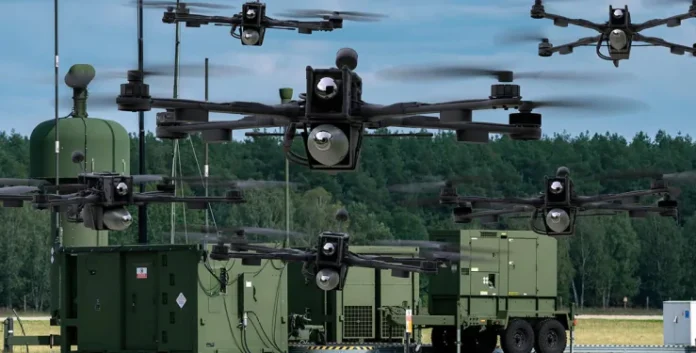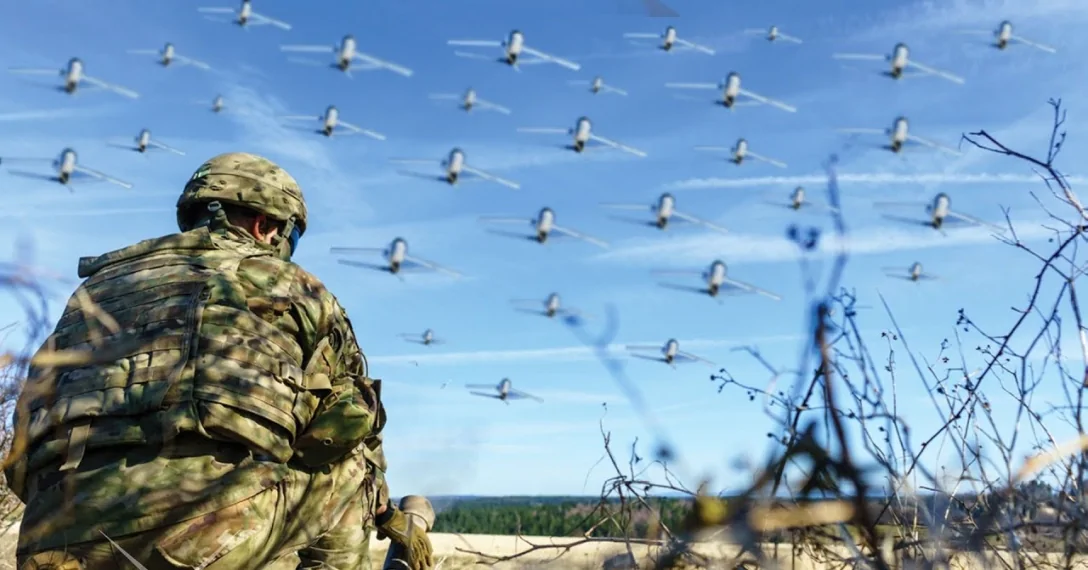
Pentagon’s Replicator project could revolutionize military strategy
Benjamin Jensen, a professor of strategic studies at the School of Advanced Warfare at the U.S. Marine Corps University, wrote a long article about the implementation of the U.S. Army’s Replicator program. The main theses and conclusions are presented below in the most concise form.
The Replicator project is an ambitious Pentagon program aimed at creating swarms of drones capable of performing complex tasks on the battlefield. The idea is to reconnoiter enemy positions, attack the enemy, defend their positions and perform other missions with the simultaneous involvement of thousands of drones acting as a single organism.
Prospects and opportunities:
- Reconnaissance (swarms observe enemy positions, adjust artillery fire, and look through building windows).
- Attack (swarms attack enemy ships, tanks, airplanes, and manpower).
- Defense (swarms are used to protect their objects from enemy attacks).
- Misleading the enemy (swarms imitate the movement of troops and equipment, thereby deceiving the enemy in order to push him to rash conclusions and hasty actions).
Advantages:
- Cheapness (drones are an affordable weapon that can dramatically and relatively quickly change the balance of power on the battlefield).
- Massive (swarms can be huge, making them a formidable opponent).
- Maneuverability (drones can easily change direction and speed to evade attacks).
- Resilience (swarms of tens of thousands of drones will be able to fulfill their mission in almost any weather, in the face of the most powerful fire and electronic warfare systems).

Disadvantages:
- Vulnerability to electromagnetic interference (swarms can be disabled by new generation electromagnetic weapons).
- The absence of a “human factor” (UAVs are not capable of independent decision-making, and artificial intelligence installed on certain models cannot yet replace operators by their intellectual abilities).
- Ethical component (the use of swarms can lead to massive civilian casualties).

Despite its shortcomings, drone swarms are the future of military affairs. They can make war more effective and much less costly. For example, during last year’s NATO exercises, a swarm of drones protected a ship from an attack by enemy boats by detecting and destroying all targets.)
The Replicator project is developing technologies that will allow the creation of swarms of drones that can learn and adapt to various situations on their own, make decisions without human intervention, cooperate with each other to achieve a common goal, and so on.
If further developed, drones could revolutionize military strategy, similar to gunpowder, rifles, tanks, aircraft, etc.

Jensen’s full article, “Bringing the Swarm to Life: Roles, Missions, and Campaigns for the Replicator Initiative,” is available in English here.

